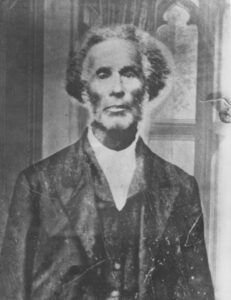Abolitionists go unpunished after a dramatic rescue openly defies the 1850 Fugitive Slave Act, infuriating slaveholders
Date(s): rescued May 1857
Location(s): Fleming County, Kentucky; Mechanicsburg, Champaign County, Ohio
Outcome: Freedom
Summary:
Addison White escaped from northern Kentucky and reached Mechanicsburg, Ohio, where abolitionist Udney Hyde provided him with shelter and employment over the winter of 1856-1857. White chose to remain in central Ohio so he could maintain contact with his wife and children, who had been born free but remained in Kentucky. The freedom seeker dictated his letters to a local abolitionist, Charles Taylor, who postmarked them from nearby Springfield, Ohio in an effort to conceal White’s whereabouts. But their diligence did not pay off. Authorities intercepted the mail and in May 1857 a large posse of slave catchers and US officials appeared at Udney Hyde’s door to arrest White under the 1850 Fugitive Slave Act. White opened fire on the slave catchers while Hyde’s daughter Amanda notified neighbors, who quickly assembled and helped White elude federal officers. Furious US authorities charged Hyde and other Mechanicsburg residents with violating the 1850 Fugitive Slave Act, but Ohio state officials in turn arrested some of the federal officers for assaulting a local sheriff. The resulting standoff between federal and state authorities was only resolved when Mechanicsburg residents agreed to purchase White’s freedom for $950. No abolitionists were ever convicted for White’s rescue, further convincing slaveholders that the recent federal law was not enough to discourage Underground Railroad activists. Later during the Civil War, White enlisted in the 54th Massachusetts Infantry. Afterwards, White returned to Mechanicsburg where he lived until his death in 1885.
Related Resources
Gun reportedly given to Addison White by Udney Hyde, Ohio History Connection, [WEB].
Recollection of Amanda (Hyde) Shepherd (abolitionist Udney Hyde’s daughter) dated September 7, 1895, Wilbur H. Siebert Underground Railroad Collection, Ohio History Connection, [WEB]
Narrative by local historian in Benjamin F. Prince, “The Rescue Case of 1857,” published in Ohio Archeological and Historical Publications xvi, (1907), accessible at Wilbur H. Siebert Underground Railroad Collection, Ohio History Connection, [WEB]


